Gaza Strip: Snapshot | December 2020
Monthly highlights
- One-day escalation results in Palestinian injuries and significant damage to infrastructure.
- Weekend curfew introduced to contain the spread of COVID-19.
- Increase in the movement of people via the Israeli-controlled Erez Crossing since the start of the pandemic.
- The Egyptian-controlled Rafah Crossing remained closed, with over 7,000 people registered to exit Gaza.
- Damage to agricultural land due to rainstorm and Israeli military operations.
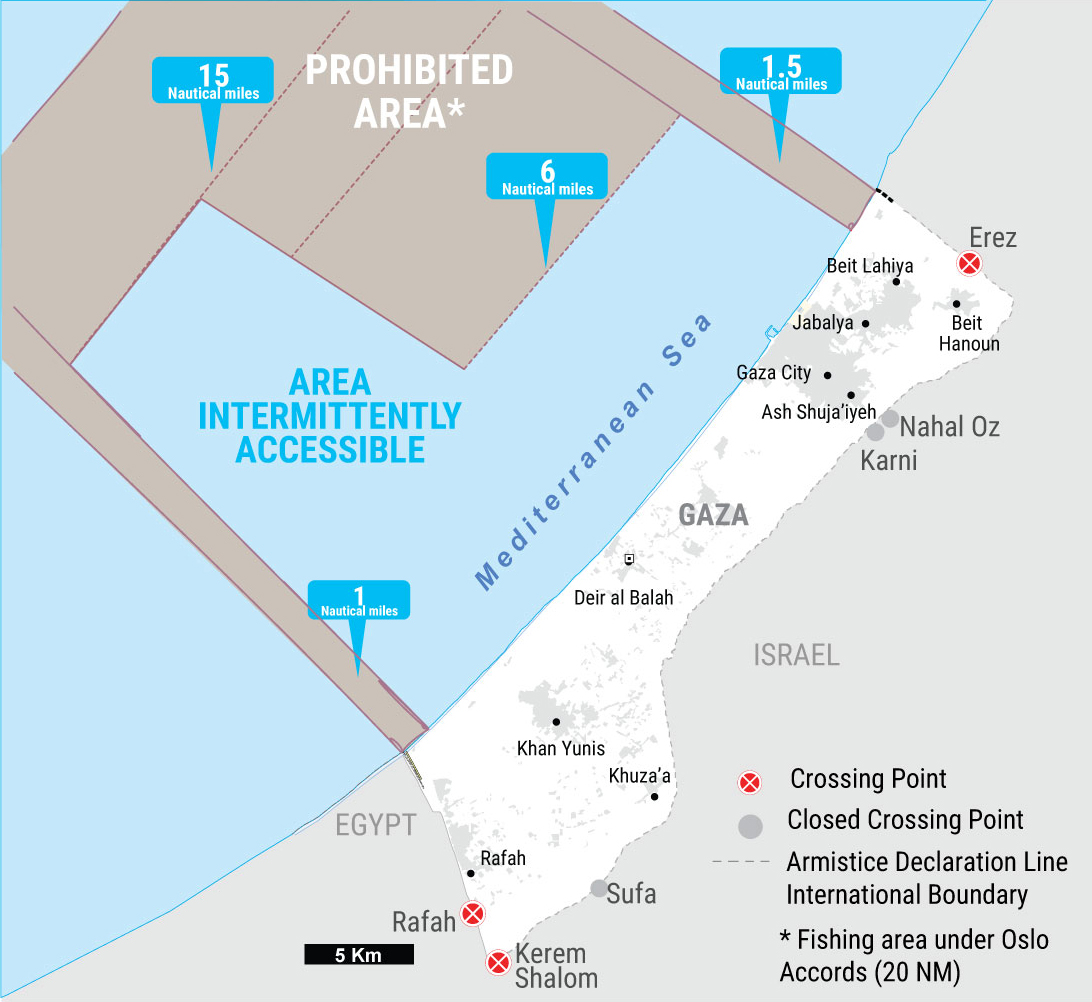
Protection of civilians and casualties
- On 25 December, two rockets were fired towards Israel. The next morning, Israeli forces carried out airstrikes in Gaza city, reportedly targeting several Hamas-run facilities. Three Palestinians, including a six-year-old girl, were injured, and two schools, three factories, a hospital, a mosque, electricity towers and a water carrier adjacent to the reported targets, were damaged. This is the first escalation resulting in injuries and significant property damage in Gaza since mid-August 2020.
- On 14 December, a home located about one kilometre away from Israel’s perimeter fence, east of Gaza city, was hit and severely damaged by an Israeli tank shell, which according to Israeli sources was fired accidentally.
- On at least 75 occasions, Israeli forces opened warning fire towards Palestinians near the perimeter fence and off Gaza’s coast, presumably to enforce access restrictions. This is approximately the same as the monthly average of such incidents since the beginning of 2020.
- Israeli forces conducted four land-levelling operations within Gaza, near the perimeter fence, one of which have damaged 48 vegetables-planted dunums. Israeli forces have also deployed signs at about 100 metres away from the fence, ordering Palestinian farmers to move away their crops, or otherwise they would be forcibly removed.
Comprehensive data on conflict-related casualties is available at OCHA’s interactive database.
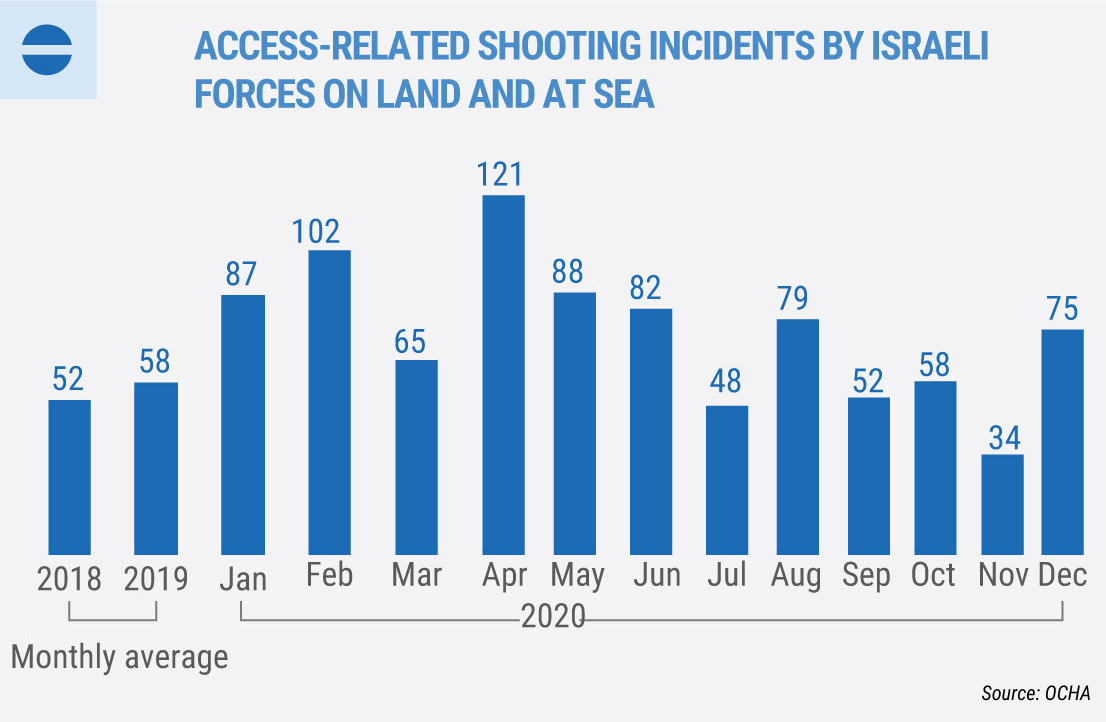
Access
- From 11 December and through the end of the month, the local authorities introduced a weekend curfew from 18:30 Thursday to 07:00 Sunday to contain the spread of COVID-19. The authorities have also designated 68 out of the 96 geographic areas in Gaza as ‘red’, where no movement is allowed.
- The number of crossings of people via the Israeli-controlled Erez Crossing in both directions more than tripled during December, compared with the monthly average between April and November. This is only 6 per cent of the equivalent average in January-February, prior to the outbreak of the pandemic.
- A total of 930 applications for exit permit by patients referred to specialized treatment in the West Bank or Israel were submitted to the Israeli authorities during the month, more than twice the average of applications in the previous three months. The increase is due to the resumption of the Palestinian Authority’s coordination of the application process directly with Israeli authorities in mid-November. Some 71 per cent of the applications were approved, slightly above the pre-COVID average, while the remaining were either denied or received no answer by the time of the medical appointment.
- The Rafah passenger Crossing controlled by Egypt remained closed throughout the month, with only 15 entries into Gaza exceptionally allowed. Over 7,000 people, including patients and students are registered to exit Gaza, while hundreds of Gaza residents are reportedly stranded in Egypt.
- A total of 9,020 truckloads of goods entered Gaza via the Israeli-controlled Kerem Shalom Crossing and 750 via the Rafah crossing with Egypt, 13 per cent increase and 8 per cent decline, respectively, compared with the monthly average since the beginning of 2020.
- A total of 451 truckloads were allowed by Israel out of Gaza, of which 101 were sent to Israel and 350, mostly strawberries and vegetables, to the West Bank. This is nearly the same as the volume of trucks that exited in December 2019.
Comprehensive data on Gaza crossings is available at OCHA’s interactive database.
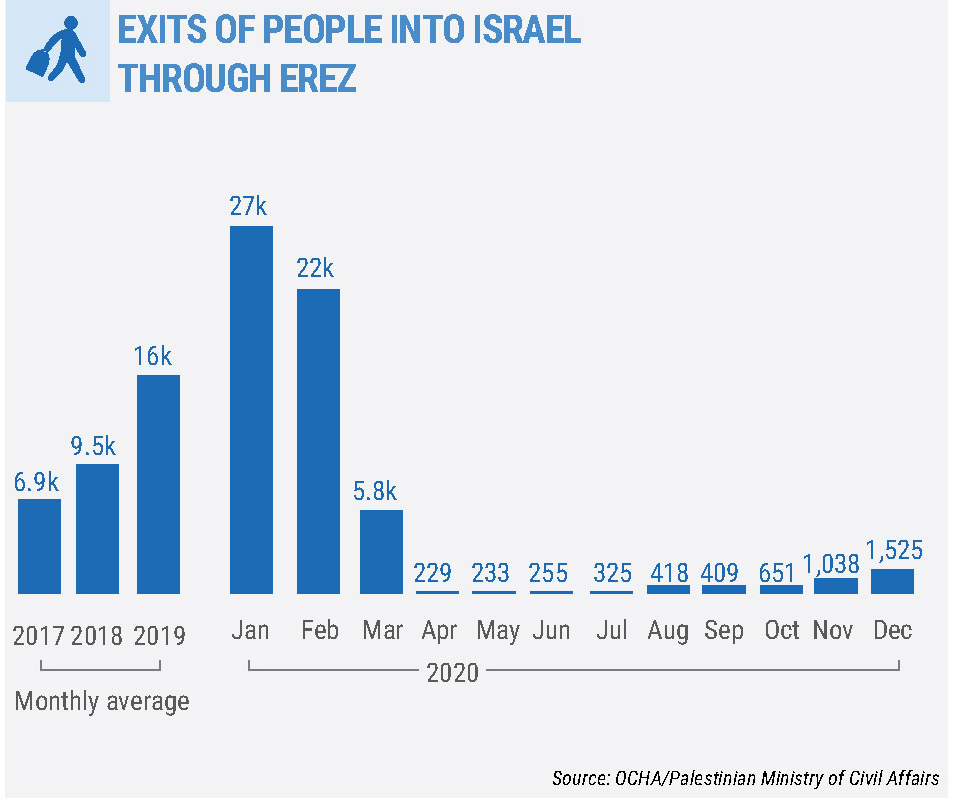
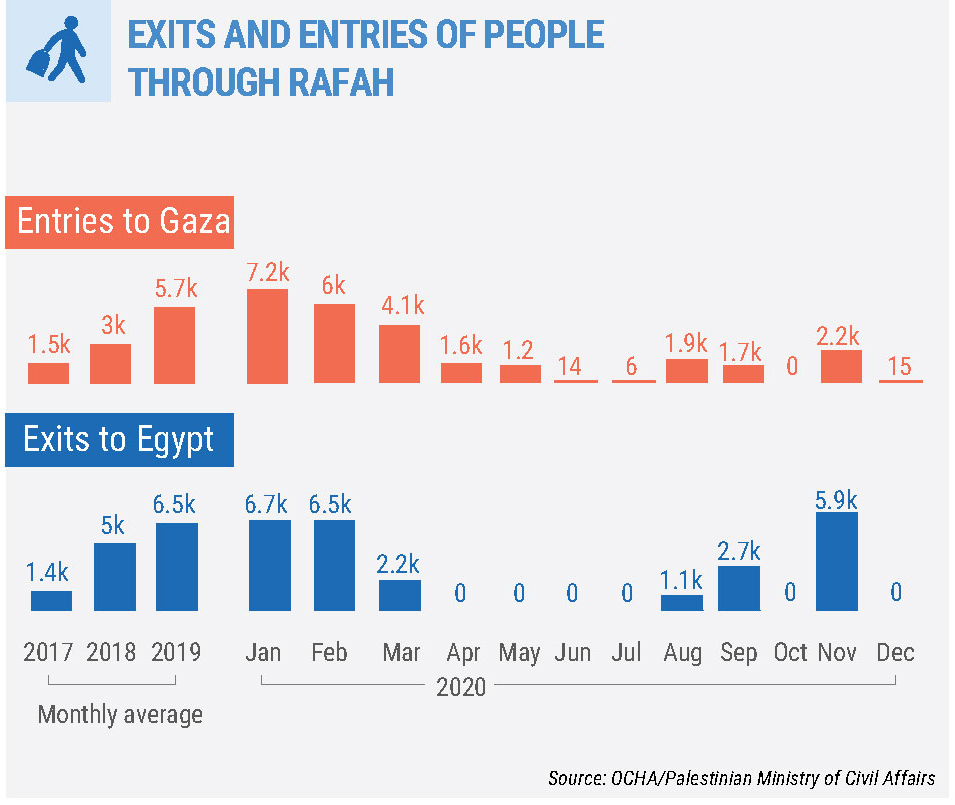
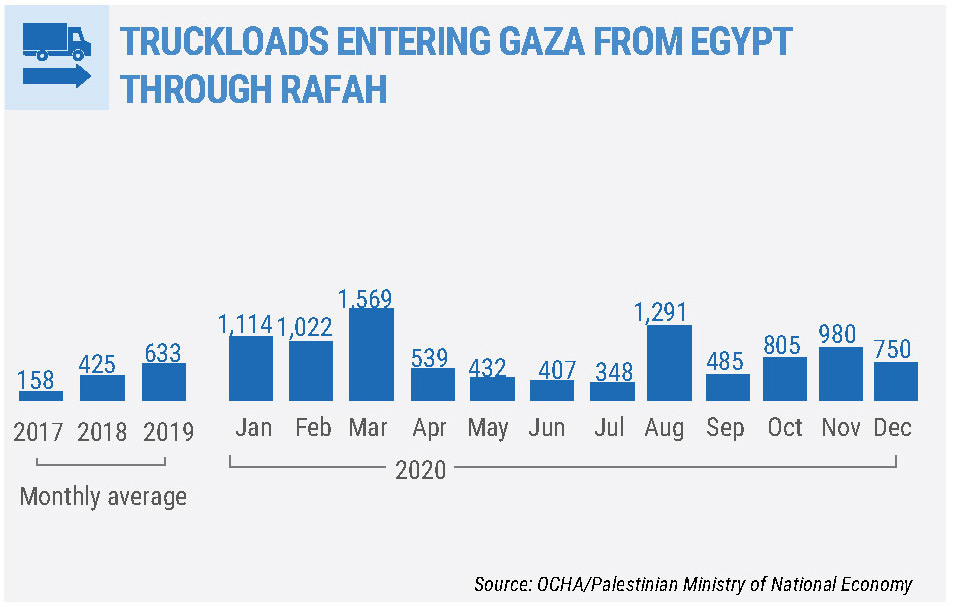
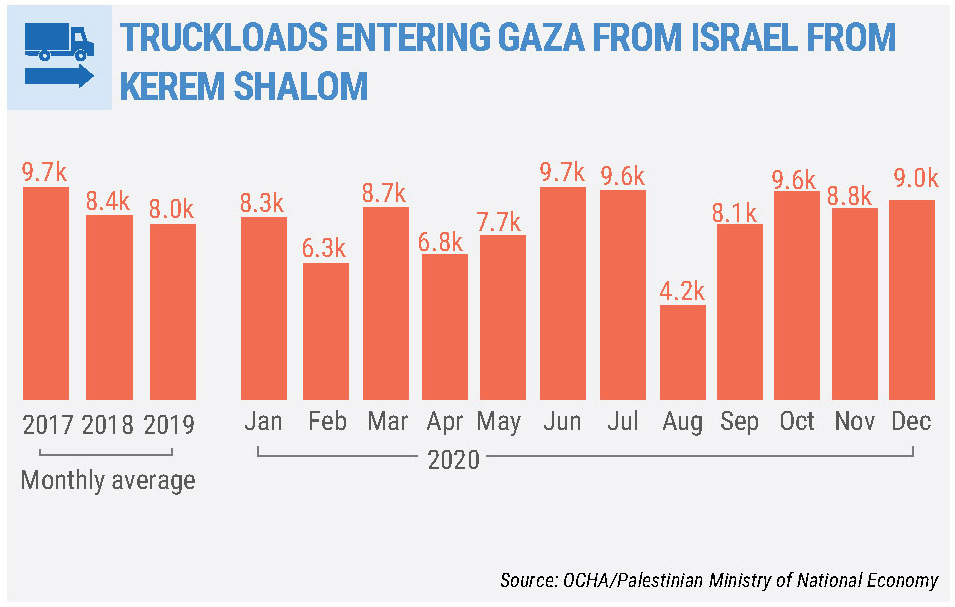
Services, Livelihoods and Shelter
- The average supply of electricity in December remained at 14 hours a day, one of the highest levels recorded throughout 2020.
- A slight reduction (7 per cent) in the volume of desalinated water produced by Gaza’s public water utility was recorded in December, compared with November, reportedly due to a seasonal decline in demand.
- The pollution levels of wastewater flows discharged into the sea declined by about 10 per cent, compared with the previous month, however, it remains twice above the recommend WHO/PWA standard.
- Due to the severe damage sustained by a main water carrier during the Israeli strikes on 26 December, water supply to 250,000 residents in Gaza city was disrupted through the rest of the month. Repair works were completed in early January.
- Heavy rainfalls recorded on 20 December damaged 471 dunums of land in northern Gaza, mostly planted with strawberry, with losses estimated at US$675,000, affecting 246 farmers.
An interactive database on electricity supply in Gaza is available at OCHA’s website.











